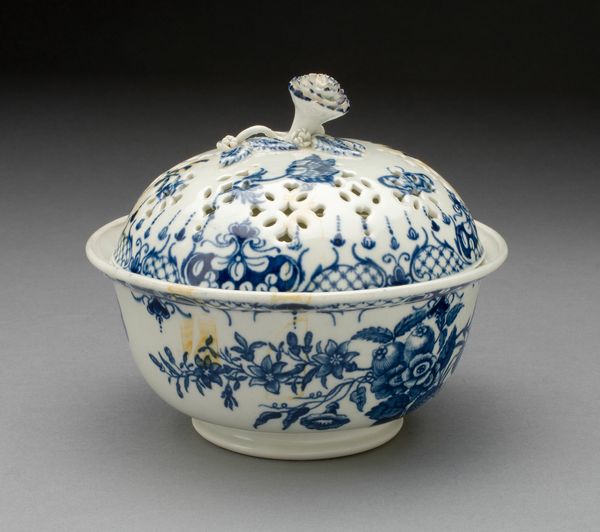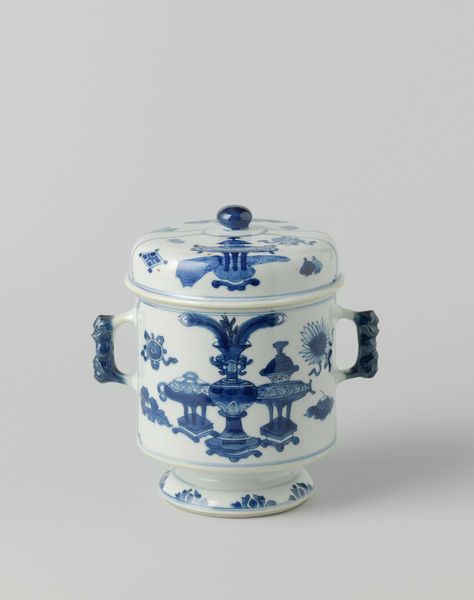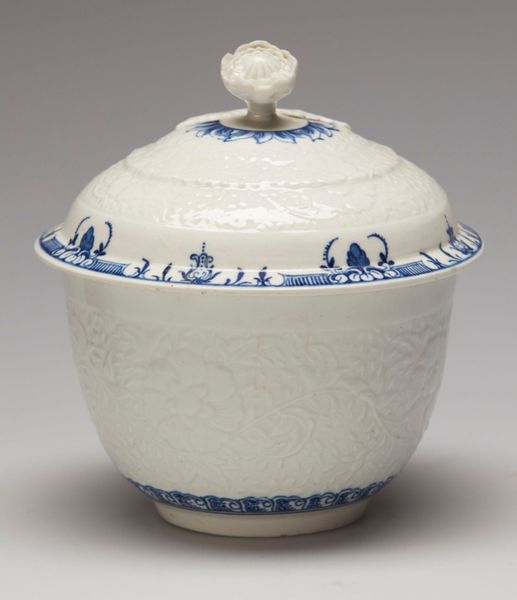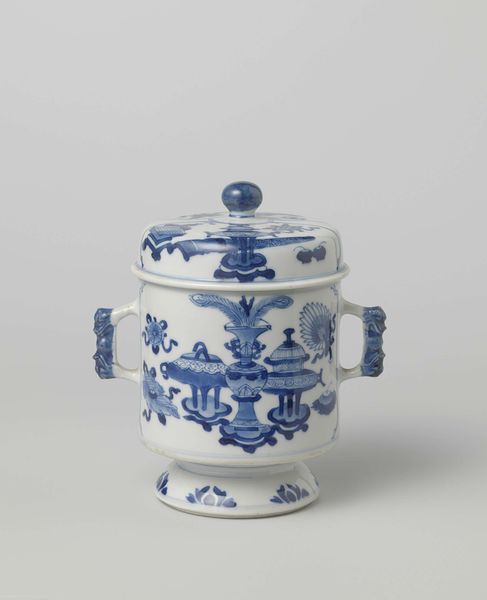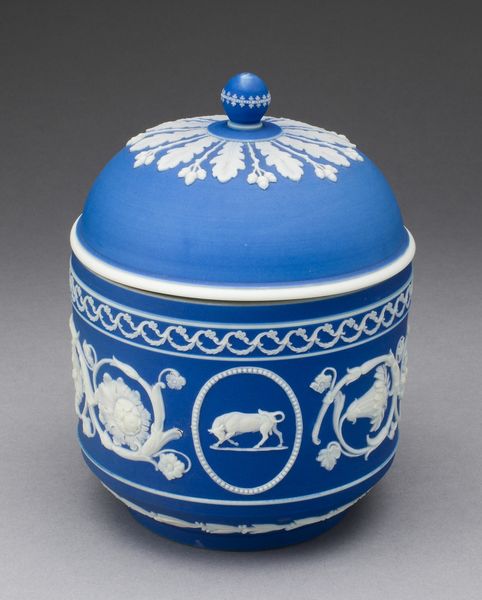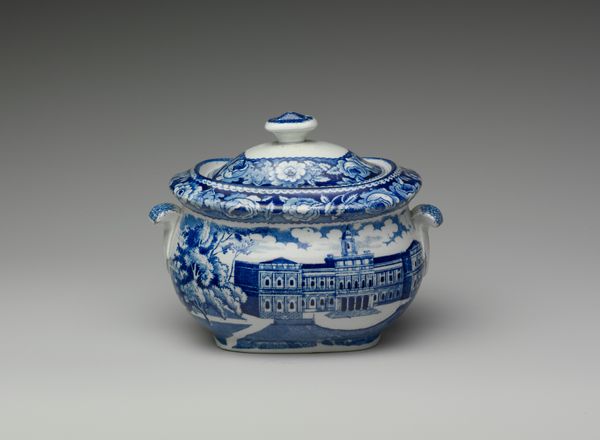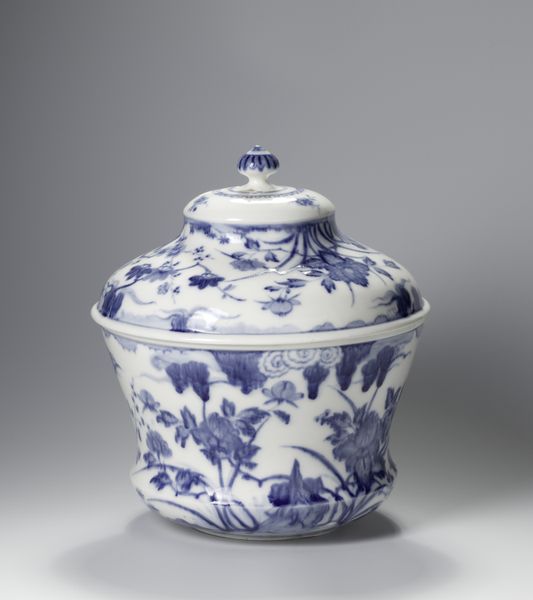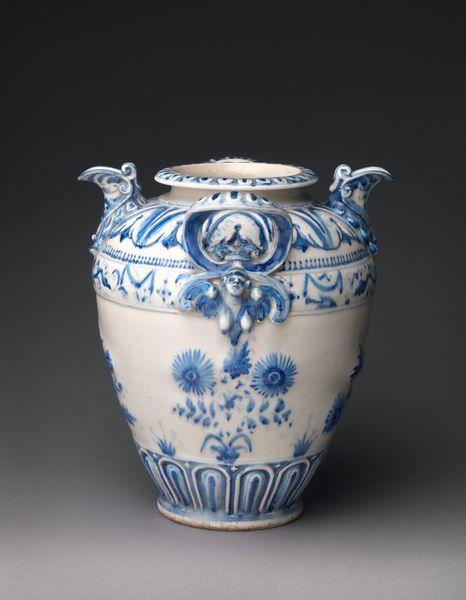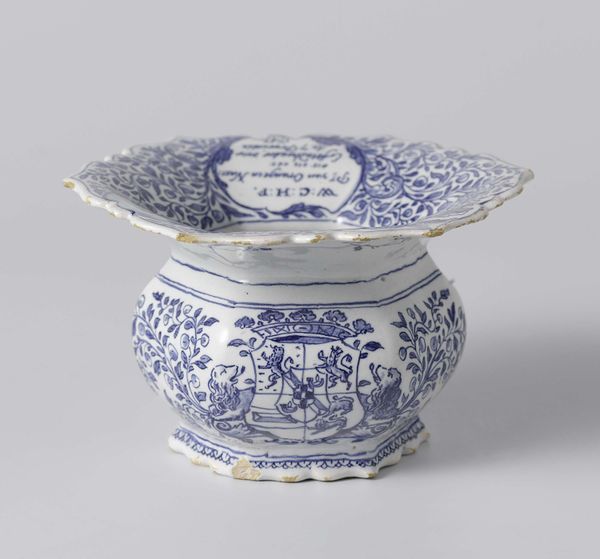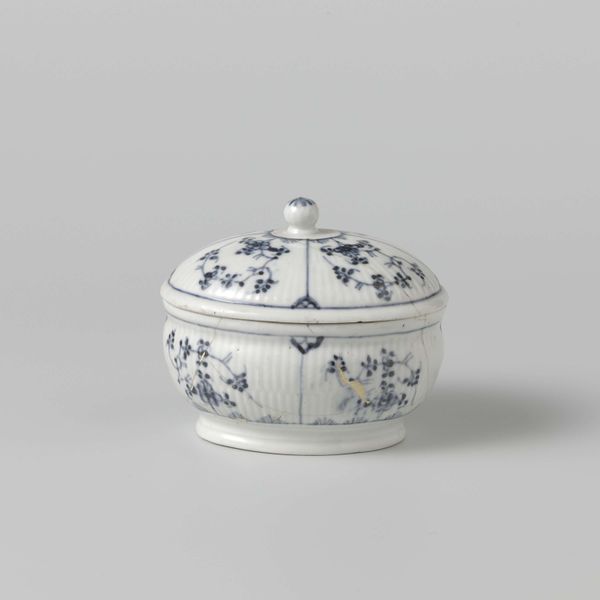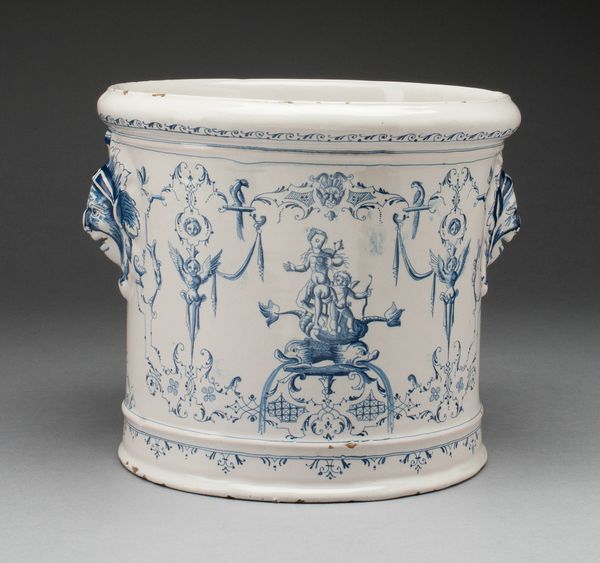
ceramic
#
neoclacissism
#
ceramic
#
decorative-art
Dimensions: 9.5 × 11.4 × 8.6 cm (3 3/4 × 4 1/2 × 3 3/8 in.)
Copyright: Public Domain
Curator: Here we have a striking "Sugar Bowl" produced around 1790 by the Wedgwood Manufactory. The Art Institute of Chicago houses this wonderful example of late 18th-century decorative art. Editor: It’s quite beautiful, though in a restrained way. The color combination, the cobalt blue against the white relief, has such a calming presence. It feels like a very controlled, upper-class aesthetic. Curator: Absolutely. The creation of these objects was highly regulated by Wedgwood himself. The factory system and the division of labor that Josiah Wedgwood pioneered truly revolutionized ceramic production, enabling this degree of precision and replication. It speaks to broader changes in British manufacturing and consumerism. Editor: Precisely, this “Sugar Bowl,” as a marker of refinement, enters into the discourse of trade and colonization. We often forget that sugar had a dark history tied to enslavement in the colonies, the commodification of which greatly supported elite European lifestyles and aesthetics of beauty. Curator: That’s undeniable. And you see, it’s fascinating how Wedgwood catered to both the aristocracy and the burgeoning middle class. This ceramic itself represents an interesting crossroads of artisanal skill, emerging industrial practices, and consumer desire. Note how Wedgwood expertly crafted what appears as the raised ornamentation on the exterior—each one skillfully cast in a mold before application on this powder blue Jasperware body. Editor: The initials, those decorative monogram initials within that central cartouche—presumably the commissioner of the sugar bowl—further underscores this theme of the elite marking their territory. The very act of personalizing everyday items indicates ownership and social power. It speaks to who has the access and resources. Curator: Certainly, that focus on individual expression was highly valued, within limitations. Wedgwood was quite skilled at using classical designs and adapting them to new products that met current demand. Mass production and accessible luxury, combined with careful quality control and an aura of bespoke service! Editor: Yes, indeed. In a relatively short time, he created items that came to represent an intersectional view of high social status, domestic habits, gender roles, and trade practices—packaged as ‘refined taste’ itself. Examining the material history unravels those layered complexities. Curator: Such a wonderful thing, the sugar bowl is simultaneously lovely to behold and a complex cultural artifact. Editor: A quiet emblem loaded with implications, waiting to be recognized, beyond pretty details and elegant form.
Comments
No comments
Be the first to comment and join the conversation on the ultimate creative platform.
